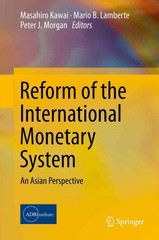Plz help me
Which of the following Anti-trust acts provided more specific guidelines to anti-trust legislation (for example, price discrimination is not allowed if it hinders competition, and a person cannot serve on competing firms' board of directors)? The Justice Department Act of 1918 Which of the following is a difference between a purely competitive firm and a monopolistically The Federal Trade Commission Act of 1915 competitive firm? The Clayton Act of 1914 The number of firms in the industry is large for a mo blistically competitive firm, but not a purely competitive firm. The Sherman Anti-Trust Act of 1890 There are zero economic profits in the long run for a mon olistically competitive firm, but not a purely competitive firm. Question 1 5 pts There are barriers to entry in monopolistic competition, but not in pure competition. the demand curve of a monopolistically co Assuming that the price is greater than the average variable cost, a monopolist maximizes profits ownward sloping and the demand curve of a perfectly competitive firm is horizontal at the output for which (picture a graph): average variable cost and average total cost are in the downward part of their curves and price is equal to marginal cost Some industry types are more efficient than others. Assuming no economies of scale, in which of marginal cost is equal to marginal venue in the upward sloping part of the marginal cost curve the following industries is the firm producing at the highest average total cost in the long run (at the highest point on its ATC curve)? price is equal to marginal cost in the ward part of the marginal cost curve average total cost is at the lowest point Pure competition Monopsony According to our text, which of the following is accurate about a monopoly industry? Firms in all of the listed industry types produce at higher than the minimum ATC. A monopoly does not have control over the price. It must acce constant price set by the free market lonopolistic Competition. equilibrium price. Monopoly. A government-granted monopoly (for example, a utility) is more-efficient and usually charges lower prices than a self-earned (free market monopoly (for example, Microsoft), A monopolist is always profitable in the ecause there are barriers to entry. Which of the following industries is a good example of an oligopoly industry? A monopolist operates at exce ss profits in the short run, but zero economic profits in the long run. the airlines industry in which only several large airline companies dominate the market Monopolies can be profitable in the long run b f barriers to entry, but profits are not guaranteed The U.S. Postal Service Let's say that you are looking at a table with output and cost data for a monopoly and you observe the following: Any retail industry that has more than 10 sellers At a quantity of 300 units, the firm's marginal cost and marginal revenue both equal $2.40. The higher education market in which approximately 30 - 40 colleges offer classes in each state At a quantity of 400 units, the firm's marginal cost reaches its lowest point at $1.80. At a quantity of 500 units, the firm's ave reaches a minimum of $2.00. The restaurant industry, in which hundreds of restaurants compete in a certain region offering me At a quantity of 600 units, the firm's marginal cost and marginal revenue both equal $2.40 again. their customers. At a quantity of 700 units, the firm's marginal cost is $5.00 and its marginal revenue is $3.00. If this firm wants to maximize its profits, which quantity should it produce? Which of the following companies are most likely to face a nearly horizontal demand curve? 300 clothing retail stores offering their goods on the Internet 600 Companies (like Netflix) offering program 500 The wholesale oil industry. 400 Companies offering search engines on the Internet 700 When gasoline prices rise, oil companies are often accused of collusion in order to artificially raise the price and reap exorbitant (extremely high) profits. Which of the following is a reason According to oligopoly game theory, if firm A sets a low price and firm B sets a low price, then why this is unlikely to persist in the long run? The profits of both firms will be excessive and unsustainable A high price will lower profits of the existing firms The profits of both firms will be relatively low The profits of both firms will be relatively high It is usually very easy for all the producers in the industry to come to an agreement about the price and production quotas so the agreement breaks down easily too The profits of both firms will be at a medium high level )All of the listed answers are correct. Which of the following Anti-trust acts provided more specific guidelines to anti-trust legislation A high price will invite new entrants (competitors) into the market who will undercut the price in order to (for example, price discrimination is not allowed if it hinders competition, and a person cannot establish a place in the market. serve on competing firms' board of directors)? The Justice Department Act of 1918 The Federal Trade Commission Act of 1915 The Clayton Act of 1914 The Sherman Anti-Trust Act of 1890







